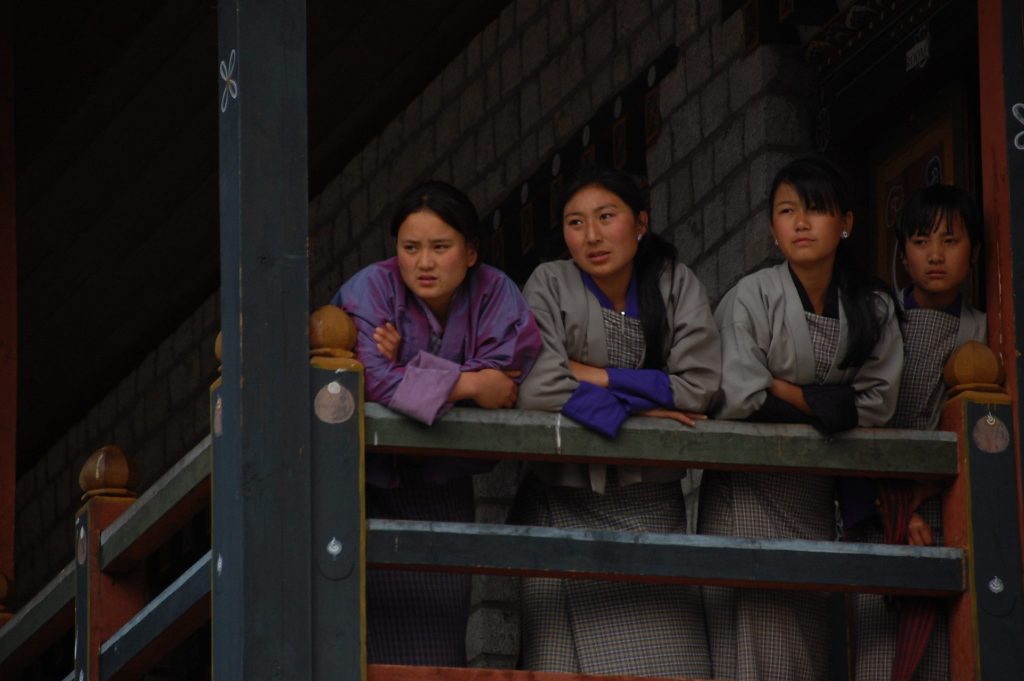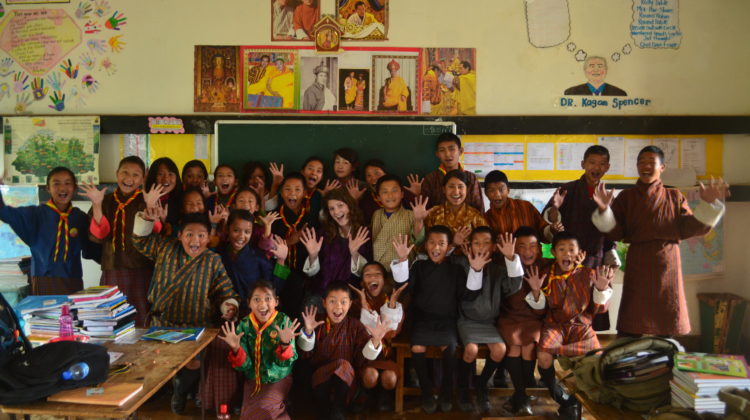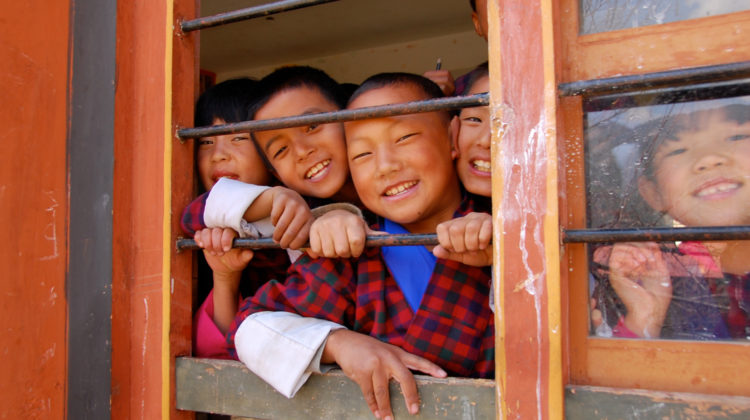Introduction
“Disruption” and “innovation” are two terms that permeate current development practice and research. Standard ways of ‘doing’ development are perceived as being in urgent need of disruption if they are to meaningfully improve people’s lives. This includes work on gender equality. The history of gender approaches – from Women in Development (WID) to Women and Development (WAD) to Gender and Development (GAD) – needs an infusion of innovation and disruption to more effectively lead to better gender outcomes in maternal, newborn and child health (MNCH); education; women’s rights and other areas.
At the same time, disruption for the sake of disruption is not enough. The long-term success of a disruption, whether related to gender equality or other development priorities, requires the disruption to become institutionalized. An effective disruption needs to become business as usual to provide sustainable, long lasting change for how we undertake development work. For example, the practice of gender responsive budgeting emerged as a significant disruption to the standard budgeting process. It introduced a gender lens that identifies the different impacts of a budget on women and men and subsequently allocates resources in a way that promotes gender equality. There was a time that this seemed almost revolutionary; a key disruption that introduced a meaningful new innovation. Today, gender responsive budgeting is a regular part of the budgeting process for many. It is common among development NGOs. It is also a component of budgeting at both the national and local government levels in countries like El Salvador and Bolivia. Canada passed the Canadian Gender Budgeting Act in 2018. In Austria, gender budgeting is even entrenched in its constitution. A one-time gender disruption is now institutionalized as business as usual.
Institutionalizing a meaningful gender disruption is potentially critical for promoting better and more sustainable gender outcomes. We would suggest, however, that institutionalizing a gender disruption is not enough. There are times where disrupting the disruption itself is needed to ensure it does not become drained of meaning or meaningful application as part of its institutionalization. The landscape of development theory and practice it is littered with disruptive buzzwords that were institutionalized and subsequently drained of meaning. Perhaps most notable is the disruptive promotion of grassroots participation in the 1970s and 80s (Chambers 1983; Freire 1970) that subsequently gained widespread acceptance, eventually turning into the “tyranny of participation” as the disruption became just another institutionalized technocratic process stripped of its original empowering focus (Cooke & Kothari 2001). Disrupting the one-time disruption that is now institutionalized is necessary to avoid this situation.
Gross National Happiness: An institutionalized development disruption
Bhutan is a tiny country that would seem to be globally insignificant. Yet its national development strategy, known as Gross National Happiness (GNH), is a significant disruption to development discourse and practice. GNH, which was originally articulated by the fourth king of Bhutan, moves beyond the traditional development focus on economic growth and offers a holistic and multidimensional approach to improving people’s lives. Originally based on four pillars – equitable socio-economic development, cultural preservation and promotion, environmental conservation and good governance – it is has more recently been conceptualized as nine domains:

The nine domains of GNH are conceptualized as interdependent, recognizing the synergies and interrelationships across complex economic, ecological, cultural, and governance systems. As a development strategy, GNH intends to foster and promote the nine domains to create the enabling conditions for people to choose happiness and inner contentment. The choice of happiness and contentment is still up to the individual, but the development process puts the economic, social, cultural and ecological conditions in place that enable people to freely make that choice. This is radically different territory than the traditional development approach focused on increasing GDP. A sole focus on economic growth is disrupted by a holistic GNH approach that addresses the multiple dimensions of being human. And while today there are many multidimensional development approaches such as the human development paradigm, GNH is very much one of the original disruptors that precedes most of the current multidimensional frameworks. Moreover, it is directly connected to its cultural context, indigenizing the country’s development process.
GNH is not just a disruption of development discourse and action. Over the last 15 years or so, Bhutan has institutionalized this disruption as the central part of Bhutanese development governance. Bhutan’s 2008 constitution commits the Bhutanese state to promoting the enabling conditions for GNH. In addition, multiple GNH-related agencies and policy and planning tools now exist as the core of Bhutanese governance practice. The GNH Commission, for example, is the national planning agency that develops 5 year plans that integrate GNH targets into the activities of all central government ministries and all district and local governments. At the policy formulation level, a GNH screening tool is used to ensure every policy passed in the legislature promotes the 9 domains of GNH. Perhaps most well-known is the GNH Index, which measures policy outcomes through a GNH Survey undertaken every 5 years. These GNH policy tools illustrate that a one-time development disruption is now at the institutional heart of Bhutanese governance.
Gross National Happiness and gender
Where does gender equality fit within Bhutan’s institutionalized GNH disruption? Existing research suggests that patriarchy remains evident in multiple context within Bhutan (Chuki 2019; Chuki & Turner 2017; Khan 2015). Yet our own project-based gender assessments indicate that popular perceptions of gender within Bhutan suggest a fairly widely held belief that women inhabit a relatively strong position in society. The reality is decidedly more complex. On the one hand, traditional cultural norms and customs have often put women in control of their lives. There has been a long practice of matrilineal inheritance and control of land by women. From the 1950s onwards, as new reforms commoditized land, land ownership became a key asset for women (Pain and Deki 2004). This custom suggests that Bhutanese traditional values support equality between women and men, which is also a component of the practice of Buddhism. Bhutanese matrimonial practices also give both women and men the right to initiative divorce. Furthermore, in parts of Bhutan, women historically practiced polyandry. These dimensions of power suggest women have significant agency within the domestic sphere.
On the other hand, other traditional customs contribute to the disempowerment of women. For example, Bomena, or night-hunting, is a practice that translates as ‘going towards the girl’. In this old rural custom, boys would secretly enter a girl’s home at night to engage in sex without prior consent as a way to find a partner and get married (Penjore 2019). This custom has led to the sexual exploitation of girls, particularly by government officials or urban visitors who used their status to deceive young girls with a false promise of marriage. In 2006 the National Commission for Women and Children (NCWC) described “socially sanctioned forms of violence and abuse such as ‘Night Hunting’ as rape”. Gender-based violence remains a reality for many urban and rural Bhutanese women and girls, where 44.6% have experienced one or more forms of partner violence during their lifetime (National Commission for Women and Children 2019).
The domestic sphere is also characterized by traditional practices that see women take on a double burden or second shift. This is unpaid labour where women take responsibility for all domestic work including child raising, cooking, cleaning, and caring for elders. Women complete 2.5 times more unpaid care work than men, which as a share of GDP is 11% (National Commission for Women and Children 2019). With less time and flexibility than men, it becomes difficult for women to pursue further education or seek work promotions.
A similarly mixed situation exists in the public sphere. Bhutan’s 2008 constitution, which enshrined the current democratic constitutional monarchy, provides a framework for gender equality. NCWC was also set up by the Bhutanese government as an autonomous agency to take the lead in promoting and protecting the rights of women and children. NCWC advocates for gender responsive policies, leads gender awareness and sensitization, and strengthens the capacity for gender mainstreaming in CSOs and government institutions. NCWC also led the creation of the recent National Gender Policy 2019 and the Domestic Violence Prevention Act 2013. Yet there remains a long way to go in the public sphere. This is particularly clear with respect to equal representation in government roles that influence policies and action, where women are vastly under-represented as elected officials and within executive positions within the civil service (Royal Civil Service Commission 2018). In this context, civil society organization are increasingly stepping forward to advocate for women and girls. Organizations like Respect, Educate, Nurture, and Empower Women (RENEW) and Bhutan Association of Women Entrepreneurs (BAOWE) advocate for the end of gender-based violence and support women experiencing abuse, and build economic opportunities for women respectively.
The issue of gender inequality in Bhutan is therefore mixed: positive aspects within both the domestic and public spheres are paralleled by ongoing issues of inequality. Where does GNH fit within this mixed situation? Does GNH effectively address gender inequality in Bhutan and, if so, how? Gender is not explicit within the 9 domains of GNH or the 33 indicators that make up the GNH Index (although GNH Index data can be disaggregated by gender). Past research argues, however, that at least in theory, elements of gender analysis infuse the GNH domains and their indicators (adapted from Verma & Ura 2017):

In terms of practical application, an example of the integration of gender into GNH can be found in the 12th Five Year Plan (FYP) for 2018-2023. The Plan outlines the requirement of mainstreaming gender into the policies, plans and programs of all government agencies, and further infuses gender across all of the 9 GNH domains through the establishment of gender equality as a National Key Result Area for the entire Plan (GNH Commission 2018). This planning tool therefore guides the implementation of development plans from the national to the local levels towards achieving the 9 GNH domains through a gender lens. Gender has therefore been institutionalized within GNH with respect to how government works over the life of the 12th FYP.
In this context of an overall GNH strategy and policy tools that are connected to gender, is there evidence that GNH is an engine for promoting gender equality within the mixed gender context previously described? How is GNH, Bhutan’s gender infused development disruption that is now institutionalized in governance, doing overall? GNH has driven some notable achievements. Primary education provides a good example. Bhutan has made a dramatic improvement in primary school enrolment where the enrollment of girls now equals that of boys (Seden and Maxwell 2016). Higher secondary schools and tertiary education institutions lag the progress at the primary level but significant gains have been made there as well.
While the GNH driven advances in education have helped drive a degree of improvement for girls, a broader exploration of development indicators reveals a gender picture that remains challenging. According to the 2020 Global Gender Gap Report, Bhutan ranks only 131 out of 153 countries when measuring the gap between females and males in economic participation, educational attainment, political empowerment and health and survival (World Economic Forum 2020). Significantly, Bhutan is ranked lower in 2020 than the previous year. Bhutan’s own GNH Survey, a national survey undertaken every five years based on the 9 domains of the GNH index, continues this theme. The most recent survey illustrates women do poorer than men across all nine GNH domains (Centre for Bhutan Studies & GNH Research 2017). One of the two greatest gaps between women and men is in the good governance domain. Women are significantly less satisfied than men not only related to their political participation and fundamental rights, but with the responsiveness of government services and performance.
So what is going on here? Bhutan’s GNH governance model which, at least in some cases, is directly infused with gender equality elements, does not appear to be further advancing more equitable development outcomes across genders. Governance itself is doing particularly poorly. The disruption, now institutionalized in Bhutan’s governance, is not fulfilling its disruptive potential. The gap between women and men remains significant. Why?
Much gender work in the development sector focuses on institutionalizing gender-sensitive values, attitudes and approaches. Gender mainstreaming, gender analysis frameworks and other gender tools are employed to address underlying values on gender and institutionalize practices that place gender equality at the centre of development work. In this context, promoting change at the level of values can be particularly challenging. Overtly patriarchal societies are characterized by oppositional values that often lead both men and women to define subordinate positions for women as the norm (for examples from South Asia, see Habiba et al. 2016; Rawat 2014; Sultana 2010). The gender situation in the domestic and public spheres described earlier underscores that, while not as overt as elsewhere, the situation in Bhutan is complex. At the same time, the explicit infusion of gender elements into aspects of Bhutan’s GNH governance model demonstrates the existence of a value foundation that is open to pursuing gender equality. Indeed, our work at the Bhutan Canada Foundation provides some insight into this complex situation. Our work on incorporating gender into public sector training for more gender-responsive public services illustrated an intriguing situation: both women and men often assume that an amenable value foundation is in place that supports the gender elements of Bhutan’s GNH approach, and that the existence of this value foundation is inevitably driving meaningful action on gender equality at the policy and planning levels. The disruption, because it is institutionalized in governance, is assumed to be working. In other words, the 12th Five Year Plan, for example, institutionalizes gender equality values and provisions within its GNH focus, so gender equality must be increasing as the plan is rolled out. Yet the data from the Global Gender Gap Report and the GNH Survey illustrate a significant gender gap remains and is indeed increasing, particularly in the area of governance.
Comments from several Bhutanese civil servants provide insight into this situation:
“We civil servants sometimes just assume our values are working, we forget to pay attention to how.”
“Because GNH is from His Majesty, we assume its institutionalization without thinking more deeply about how to go about it.”
“We have the ‘hard infrastructure’ for gender but forget about the importance of the ‘soft infrastructure.’ ”
The notion of ‘hard’ and ‘soft’ infrastructure is a useful one. Values, or soft infrastructure, that promote gender equality are the foundation that drives an initial disruption. They form the basis for the subsequent creation of institutional processes and tools, or hard infrastructure, intended to drive gender equality outcomes through policies and programs. Yet the hard infrastructure only meaningfully works when the soft infrastructure is tended to and not simply assumed. A fairly recent study of gender mainstreaming implicitly makes this point. The title of the study itself is instructive: Everywhere/Nowhere – Gender Mainstreaming in Development Agencies (Tiessen 2007). According to the study, gender mainstreaming in development agencies is everywhere as it involves integration of gender throughout an organization’s work – from programming to budgeting to policies. Gender values are fully integrated into the hard infrastructure. Yet gender is also nowhere as its pervasiveness throughout the hard infrastructure means its implementation is dispersed throughout an organization to everyone, potentially thinning it out to the point of disappearance. Effectively addressing gender inequality disappears “somewhere between principle and practice” (p 18). We may all adhere to the principles, or values, of gender equality and the processes for promoting it are institutionalized, but this can apparently give us license to forget about pursuing it intentionally and meaningfully. We simply assume effectiveness. As a result, gender is everywhere and nowhere at the same time. We’re in cruise control. We’ve got the hard infrastructure but forget about regularly revisiting and tending to the soft infrastructure – the value foundation – that fuels the hard to meaningful action. We’re ‘doing’ gender without being purposeful.
Disrupting the GNH & gender disruption
How to respond to this? Our work with Bhutanese counterparts demonstrates that the ‘disruption’ needs to be disrupted from time to time once it is institutionalized. We need to break through the complacency that may accompany the institutionalization and subsequent normalization of a disruption. Disrupting the disruption will direct us to regularly nurture the values that underlie the work to be done, and to engage in this nurturing on an ongoing basis. Doing so will lead to more purposeful and meaningful implementation of the hard infrastructure of programs, services and policies.
BCF, in partnership with the Royal Institute of Management (RIM), the tertiary education institution responsible for public sector education in Bhutan, pursued this approach to soft and hard infrastructure in a recent gender and governance project. Given the results of the most recent GNH Survey that demonstrate women face challenges that are greater than men when accessing or using public services, the project developed and delivers curriculum that increases the capacity of Bhutanese entering the civil service or already in the service to design and implement public services that are more responsive to the needs and circumstances of women. Through project activities involving curriculum research, consultation and design, the project identified and incorporated appropriate gender concepts and skills into curriculum delivered by RIM to both new and existing civil servants. In order to ‘disrupt the disruption’, curriculum design meant that this included not only incorporating gender tools, or hard infrastructure, but explicitly including curricular components that involve critical thinking and engagement at the level of values, or soft infrastructure. In this sense, emerging and existing civil servants will, through their training, explore and think more deeply about foundational values: what are GNH values? How might patriarchy continue to influence our work? How do GNH values reflect gender equality and respond to patriarchy? How can these GNH values direct my work as a civil servant towards meaningful gender action?
Exploring these questions as part of ongoing public sector training and using them as a foundation to (re)develop skills in a set of gender tools is a modest start to better ensuring that the ‘disruption’ of institutionalized gender and GNH governance does not slip into complacency. Repeatedly engaging with and critically thinking about the soft infrastructure of gender values in confluence with developing the hard infrastructure of gender tools and processes is central to ensure sustaining a meaningful disruption. An on-going and purposeful dialog and interplay between values and institutionalized governance processes that breaks through complacency is necessary. Ultimately, such disrupting of the original disruption will enable us to better implement the hard infrastructure of programs and policies that effectively contribute to greater and more sustainable gender equality.
Works Cited
Centre for Bhutan Studies & GNH Research. (2017). A Compass Towards a Just and Harmonious Society. 2015 GNH Survey Report. Thimphu: Centre for Bhutan Studies & GNH Research
Chamber, R. (1982). Rural Development: Putting the Last First. London: Longman.
Chuki, S. (2019). Being LGBT: Their status and rights in Bhutan. Australian Journal of Asian Law 20(1), 1-8.
Chuki, S. and Turner, M. (2017). Women and politics in democratic transitions: the case of Bhutan. Contemporary South Asia 25(2).
Cooke, B. and Kothari, U. (Eds.). (2001). Participation: The New Tyranny? London: Zed Books.
Freire, P. (1970). Pedagogy of the Oppressed. New York: Herder and Herder.
GNH Commission. (2018). Twelfth Five Year Plan 2018-2023. Volumes I and II. Thimphu: GNH Commission.
Habiba, U., Rabia, A. and Ashfaq, A. (2016). From patriarchy to neopatriarchy: Experiences of women from Pakistan. International Journal of Humanities and Social Science 6(3).
Khan, N. (2015). Resistance against patriarchal hegemony: Kunzang Choden’s The Circle of Karma. Labyrinth: An International Refereed Journal of Postmodern Studies 6(3), 27-34.
National Commission for Women and Children and Royal Government of Bhutan (2019). National Gender Equality Policy, 4.
Pain, A. and Pema, D. (2004). The matrilineal inheritance of land in Bhutan. Contemporary South Asia 13(4), 423.
Penjore, D. (2010). Bomena, a misunderstood culture: Contextualizing a traditional courtship custom practiced in the villages of Bhutan. Ajia Afurika Chiiki Kenkyū 10(1), 6-9.
Rawat, P.S. (2014). Patriarchal beliefs, women’s empowerment, and general well-being. Vikalpa 39(2).
Royal Civil Service Commission. (2018). Civil Service Statistics. December 2018. Thimphu: RCSC.
Seden, Kinley & Maxwell, Tom. (2016). Gender and Education in Bhutan. Schuelka, Matthew J. and Maxwell, Tom (Eds.). Education in Bhutan: Culture, Schooling, and Gross National Happiness. (pp. 215-242). Singapore: Springer.
Sultana, A.M. (2010). Patriarchy and women’s gender ideology: A socio-cultural perspective. Journal of Social Sciences 6(1): 123-126.
Tiessen, R. (2007). Everywhere/Nowhere – Gender Mainstreaming in Development Agencies. Bloomfield. CT: Kumarian Press.
Verma, R. and Ura, K. (2017). Gender differences in Gross National Happiness in Bhutan: Abridged analysis of the GNH Surveys. GNH: From Philosophy to Praxis – Proceedings of the Sixth International Conference on Gross National Happiness, 4-6 November 2015, Paro, Bhutan.
World Economic Forum. (2020). Global Gender Gap Report 2020. Geneva. World Economic Forum.
BCF’s Think Piece series provides in-depth explorations of key issues related to development in Bhutan, written by both Canadian and Bhutanese authors. Longer and more in-depth than a blog but shorter than a journal article, each Think Piece is intended to generate thought and discussion. Please continue the conversation by leaving your own thoughts in response to an individual Think Piece in the comments section.
If you have a longer, more in-depth response to a Think Piece, please send it to us and we will consider posting it under your name. Longer responses can be sent to info@bhutancanada.org. Please include the phrase ‘Think Piece response’ in the subject line.







